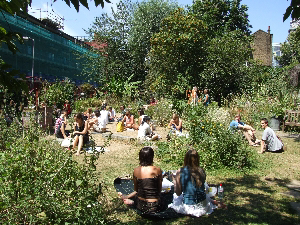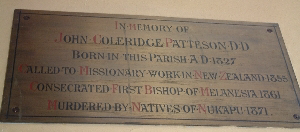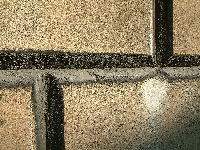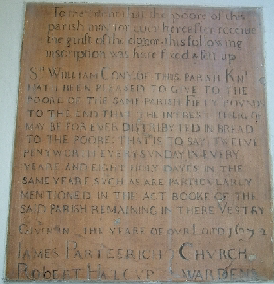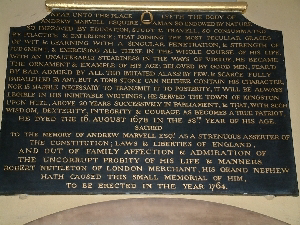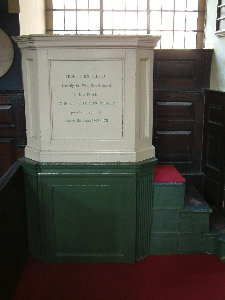St Giles is called In-the-fields because, like St Martins-in-the-Fields on Trafalgar Square, it was outside the City walls. It must have been a borough in its own right, rather than just a parish, because the street it stands on is called St Giles High Street. One thing I do know; in the 18th and 19th centuries it was the centre of one of the worst slums of London – in a city of slums. The landlords of buildings were allowed to let their rooms by the square foot and by the hour, so they could have a whole collection of people renting space during the daytime and another lot sleeping on those same square feet at night.
If you look up High Holborn, you can see Centrepoint which sits on New Oxford Street, while High Holborn actually swings off to the left. All of that redevelopment was intended to break up the St Giles slum, which was still a festering sore in the early 20th Century.

St Giles-in-the-fields with Centrepoint beyond.
John Coleridge Patteson went to New Zealand from here as the first Bishop of Melanesia in the 1860s. He was killed in the Solomon Islands after 10 years in the position and his blood-stained flax blanket hangs in the cathedral in Honiara.
A Tearle family lived in New Compton St in the late 19th Century so you can tell they were very poor; one of them was a taylor’s porter, which I think means he pushed clothes racks around. Nowadays there are few signs of the slum buildings, but the Victorian café, below, on the corner of New Compton Street, gives you a bit of the flavour of the area.
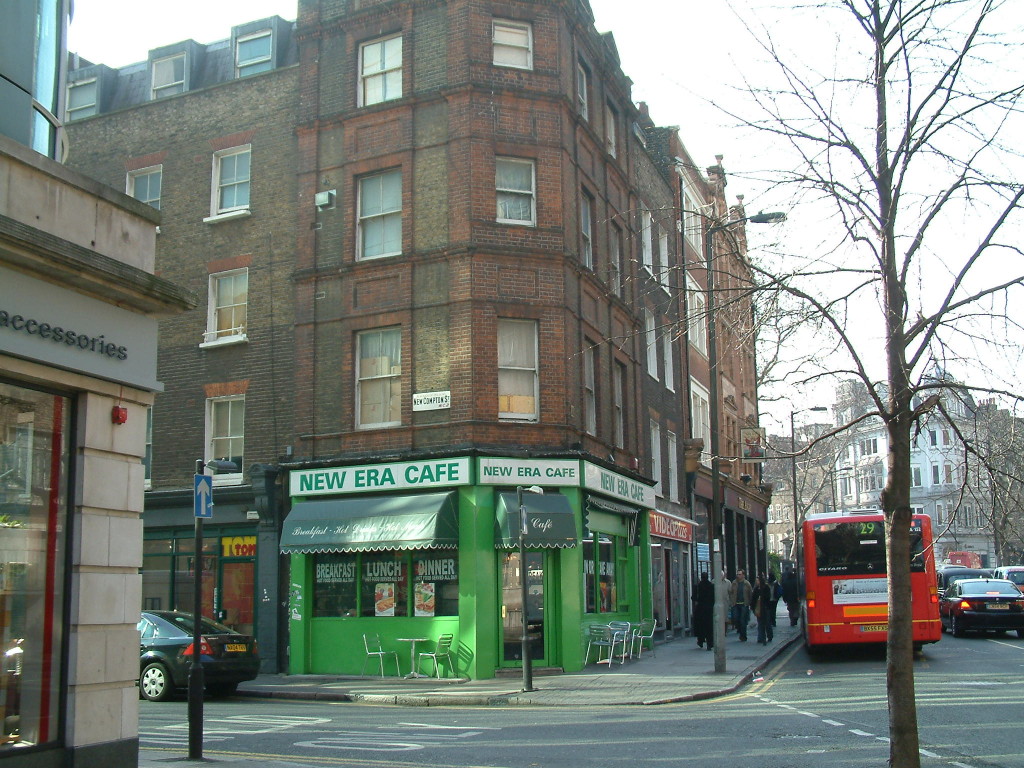
Corner of New Compton St.
The drunks, the junkies and the homeless who wander the streets and sleep in the churchyard are the direct descendants of those it has always cared for; the poor and the vulnerable.
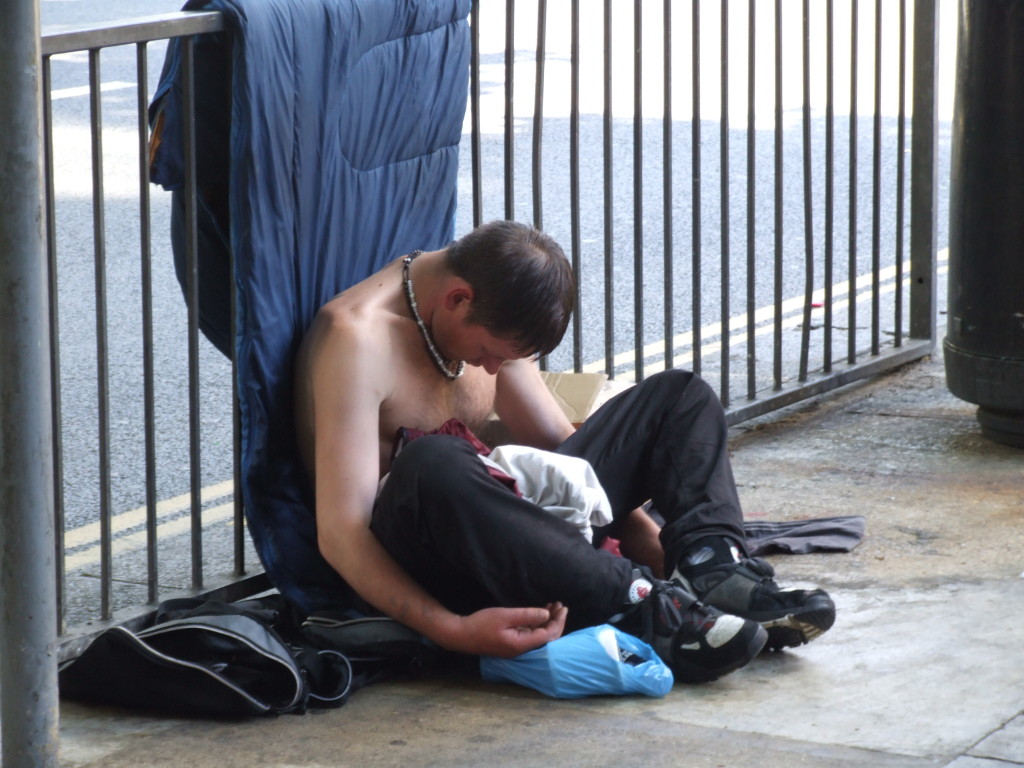
The vulnerable, St-Giles-in-the-fields.
Behind the church is a beautiful little garden, called the Phoenix garden, which is loved and cared for entirely by volunteers, like the Copperfield Garden near Union St, where the locals sit and sun themselves in a surprisingly quiet spot and where each plant, bush and tree is chosen from a catalogue of native-only species.
When you look closely at the blocks of the church, you can see the Victorian grime and soot clinging to the surface, not yet washed away, and still a couple of millimetres thick.
This plaque below records a donation by Sir William Cony, who in 1672 gave £50 and asked for the interest from it to be paid “forever” to the poor of the parish, in the form of bread every Sunday, plus eight holy days.
The rather extravagant memorial to Andrew Marvel, poet and writer. He was good, and I did enjoy his work. You can see here the extent of local affection for him.
There is also a memorial to John and Charles Wesley, who are remembered as having preached in this church, and used this pulpit below to do so. John Wesley has a statue in the grounds of St Pauls Cathedral and another memorial outside Postmans Park in St Martins le Grand, off Newgate St.
